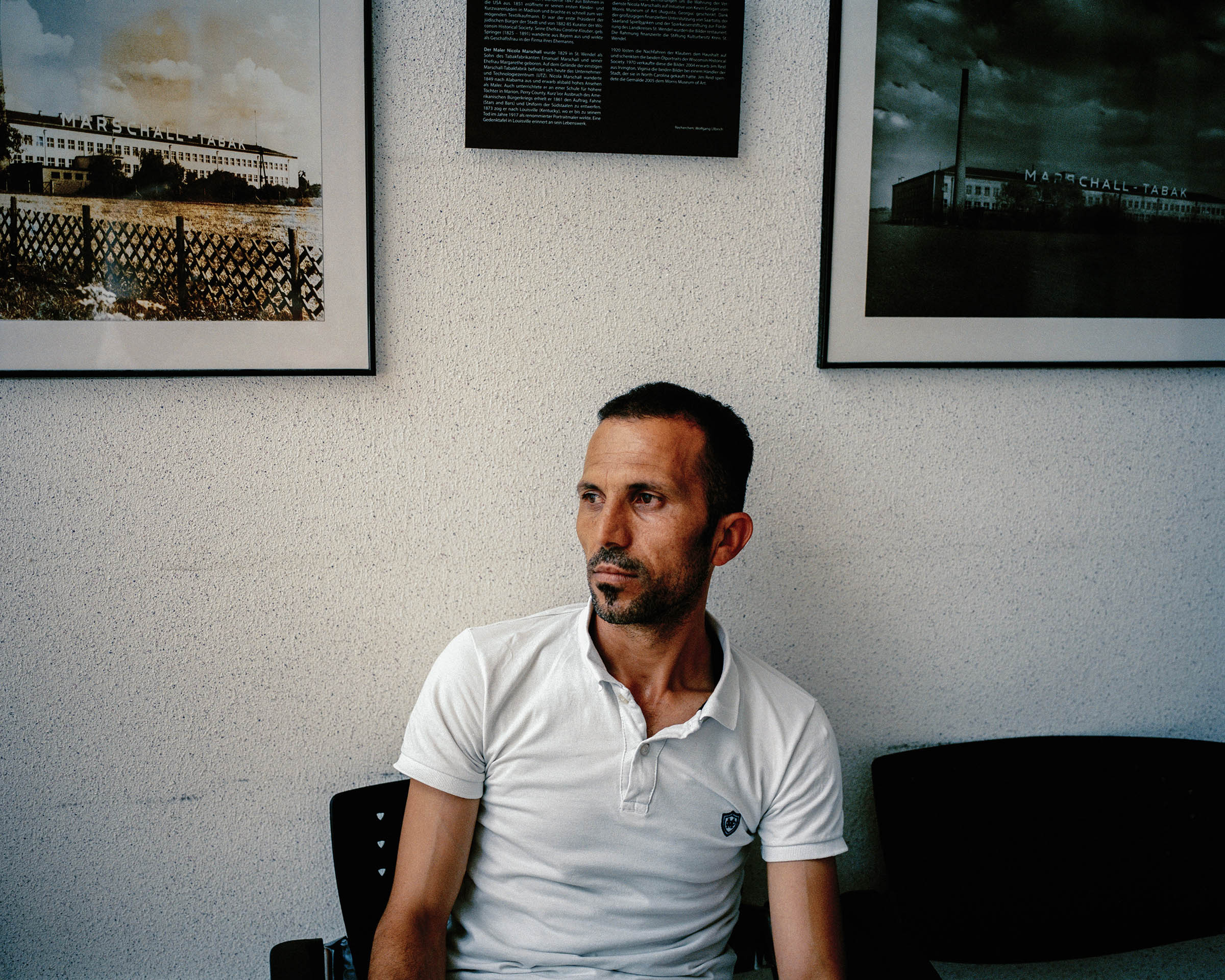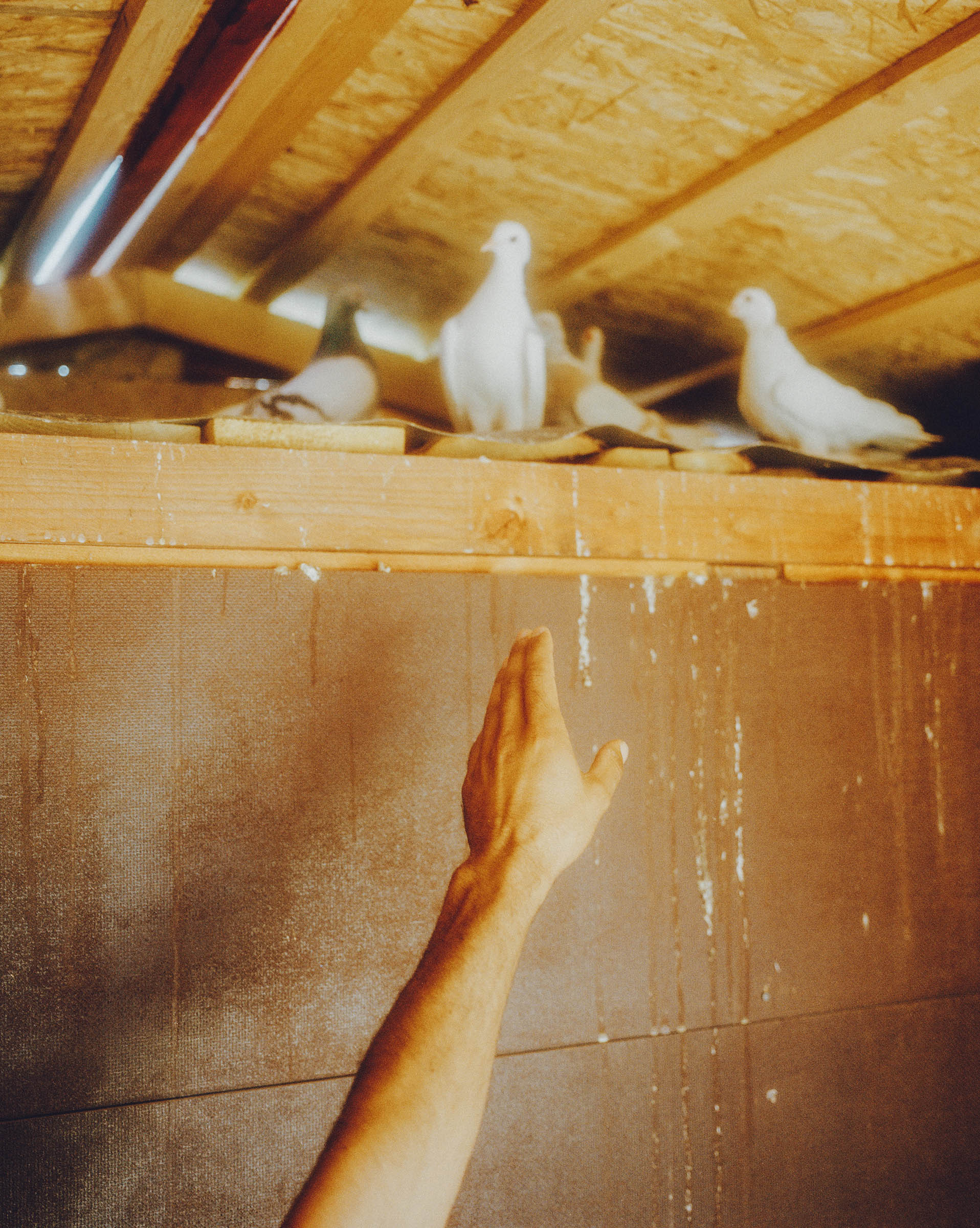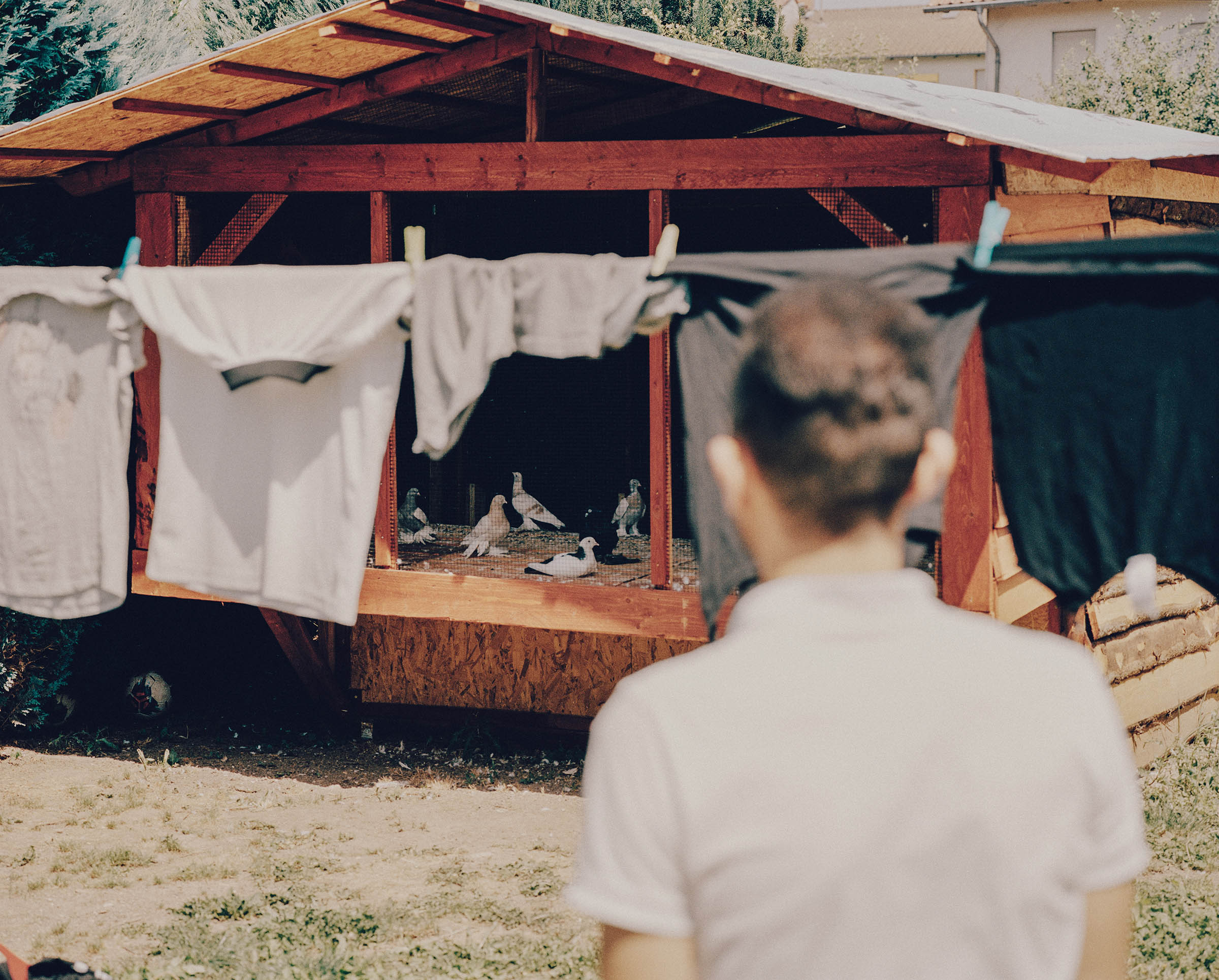
When Walid Khalil Murad drifts off to sleep, he can feel the warmth of his three small children in bed beside him. They are there in his dreams too, playing happily together. There is three-year-old Nishtiman, with eyes like her father’s and the same stubborn spirit, and his sons, Nashwan, 5, and Nashat, 6, all battling for a place on Murad’s lap. He can touch them, talk to them, and he is as happy as he has ever been.
Then Murad wakes up, and they are gone. Sometimes he cries. Sometimes he drinks. Sometimes he thinks about the life jacket that kept him afloat as he drifted away from the sinking boat just a few kilometers from the Greek coast, and how he wishes he had slipped it off and sunk to the bottom of the Aegean Sea along with everything he loved.
He tried to tug his life jacket off that cold, dark morning in December 2015, when he realized that the smuggler’s boat had gone beneath the waves with his family still trapped in the cabin. A friend shouted over the waves at him to stop — maybe the Greek coastguard would come soon, maybe his family would be saved, maybe they would have a happy life in Europe. But none of those maybes came true. Murad has never seen Nishtiman, Nashwan, Nashat or his wife Jinar again.
“I am lost,” says Murad, 34, who owned two shops in the Iraqi city of Sinjar before Islamic State fighters forced him to take his family and flee. He casts his sunken eyes to the ceiling and struggles to continue through the tears.
“Sometimes I talk to myself — I literally talk to myself — and say ‘maybe, just maybe, they are still alive’, then I say to myself immediately after that, ‘but the sea was very difficult, they did not have a chance.’”
There are many obstacles standing between Murad and the truth about what happened to his wife and children: chaotic record-keeping in countries where bodies wash up on beaches; an apathetic public; far-right governments with no interest in the plight of refugees. Now there is also some hope, not just for Murad but for the relatives of all the 21,000 people who have died or gone missing trying to cross the Mediterranean since 2011. After years of lobbying, an international organization has persuaded some countries to start work on identifying the dead using DNA technology – and finally giving their families some form of closure.
But behind this outwardly simple effort are layers of institutional and political complexities, which are threatening the future of the project before it has even properly started. In the meantime, Murad waits for news of his family, caught in limbo between hope and grief.
“I think it would have been better if I was with them,” says Murad, who eventually was resettled in Germany. “I find it very difficult to live this life.”

In a sparkling white building alongside a canal in the Dutch city of The Hague, scientists are at work. In this sterile, highly-regulated environment, test tubes and refrigeration units store bone fragments, blood samples, and other DNA samples from some of the most harrowing events of the last few decades.
Since its founding in 1996, the International Commission on Missing Persons (ICMP) has quietly pioneered some of the most advanced DNA identification technology in the world. It began work at the request of President Bill Clinton to try and identify the 40,000 people missing in the wars in the former Yugoslavia. In the last two decades, it has put a name to 70% of those victims, and its work on that conflict continues. In 2015, the ICMP moved its main office from Sarajevo to The Hague — a city already home to other peace and justice-based institutions such as the International Criminal Court — reflecting the expansion of its work. Today, it employs more than 140 people and is called on for any event where large numbers have gone missing – Hurricane Katrina, the 2004 Asian tsunami, the MH17 crash over Ukraine, the California wildfires, and the recent wars in Syria and Iraq.
But its newest endeavor may be one of the hardest yet.
“It is unprecedented,” says Kathryne Bomberger, Director-General of the ICMP. “Europe hasn’t experienced such a large number of missing persons in a long time, and they are missing migrants.” In these politically-volatile times, when nationalist parties have made inroads across Europe, the ICMP’s task is even more difficult.
“You can use the best technologies in the world,” Bomberger says, “but the political will in the end is what matters the most.”
The mechanics of the process are simple in theory: the countries that have found migrant bodies on their soil — mostly southern European nations like Italy, Greece, Malta and Spain — would take DNA samples and any other identifying characteristics and upload this information to a centralized database maintained by the ICMP. Meanwhile, anyone searching for a missing relative would fill in a form and give a DNA sample using a simple saliva or pin-prick blood test that can be done at home. The results of that are uploaded to a second database, and the two data sets are then compared for matches.
But none of this will happen without the full support of the governments involved, and the hundreds of thousands of refugees who survived the journey to Europe now face a surge in support for far-right leaders. For such politicians, “these people [are] without value, and particularly in death they deserve nothing from us,” says Simon Robins, a researcher on missing migrants with the University of York’s Centre for Applied Human Rights.
“If you find a body in London on the street, the authorities would make every effort to identify it,” says Robins. But when a body washes up on a beach in Greece or Italy, “the fact that that person’s racial origins suggest they may not be a citizen means that no investigation is conducted.”
And relatives of those who died in the Mediterranean have very little lobbying power. Many of the shipwreck survivors who make it to Europe are not able to vote. Family members in countries of origin are usually very poor or living in war zones.
Bomberger says the ICMP started pressuring governments to work on identifying missing migrants in 2011, when the Arab Spring led to the first large groups of refugees crossing the Mediterranean in overcrowded boats, and death tolls started to rise. The ICMP received $400,000 from the Swiss government in late 2017 — just about enough money to start the first phase of the project: bringing Italy, Greece, Malta and Cyprus together to sign an agreement and start work on the technicalities of the search. But no more pledges have been made, although Bomberger says the researchers need at least the same amount again.
When the four countries met for a second time in The Hague on June 13 this year, the Italian government refused to sign the final declaration vowing to enhance cooperation for the search. Since the country’s far-right League formed a coalition government in 2018, with its leader Matteo Salvini in the key post of Interior Minister, Italy has implemented some of Europe’s harshest policies toward migrants and refugees. Salvini closed Italy’s ports to migrant rescue ships and has started bulldozing refugee settlements.
Bomberger remains confident that Italy will eventually cooperate. “It’s early days, so it’s not unusual that there are political issues at the beginning,” she says. “I think we can overcome it.”
But for relatives of the dead like Murad, the political hostility and lack of empathy shown by countries like Italy feels like yet another indignity. “I want you to put yourself in my place, not for a day, just for one minute — just imagine that you lost your family the same way I lost my family,” Murad says.

Ingrid Gudmundsson understands what Murad is going through. Her daughter, Linda, was 30 years old, pregnant with her second child, and on vacation in Thailand with her one-year-old daughter Mira when a tsunami wave crashed into the coastline on December 26, 2004. The disaster affected 14 countries and killed an estimated 230,000 people.
Gudmundsson was at home in Sweden when she saw the news. At first, she didn’t think her daughter and granddaughter could be in danger. But then Linda didn’t answer her phone.
“After some days I began to realize what happened. But even in that time, I thought ‘I know my daughter, she is 30 years old, athletic, strong and very stubborn’,” says Gudmundsson. “I thought she must be somewhere with broken legs or arms or no voice. I went through it many, many times with different scenarios. It was terrible to not know anything.”
Carina Heeke, a psychologist at the Freie University Berlin specializing in grief, has studied the differences between relatives of those missing and those confirmed dead. She found that the people who display the most trauma are those who cling to hope that their loved one is alive.
“We assume that hope is a good thing,” she tells TIME. “But the problem is that although there may be hope, the person still is not there. So usually it comes with a lot of consequences.”
For many, the search begins to consume their lives. In Mexico, a group of mothers whose children disappeared in the drug cartel wars started digging up mass graves themselves. In Japan, a father learned to scuba dive so he could spend weekends at the bottom of the sea searching for a daughter he lost in the March 2011 tsunami.
Murad lives to share his pain. He gives talks at ICMP events. He grieves in public, letting everyone see the rawness of his unfathomable loss, sharing everything he can about his family even as tears stream down his face, in the hope that this will jolt people out of apathy and someone, somewhere will help him find Nishtiman, Nashwan and Nashat.
“At least I could go and visit their graves, and just know that they are there,” he says.
For Gudmundsson, the search for the truth ended a few months after the tsunami. In March 2005, her daughter Linda’s body was identified. They were able to retrieve her DNA from her dental records. But Mira was a baby. She did not have many teeth. She was finally identified by the ICMP in July 2005 using its most advanced DNA analysis tools, which was able to make a match with Gudmundsson’s DNA.
“It is the same sadness of course but it is easier to understand,” Gudmundsson says, adding that her grieving process was helped by a lack of blame. “This was nature, it was a catastrophe, I feel no need for revenge. But if there is war, terrorism, I think it’s another sorrow and another sadness. I only can say if they are waiting for their relatives to be identified, have hope. Trust the science.”
But science is only part of the problem. First, the bodies of the Mediterranean dead need to be found — and no one knows exactly where they are.

At the height of the refugee crisis, it was chaos. Bodies washed up on beaches, and no one knew what to do with them. Giorgia Mirto, a field researcher on border deaths attached to the University of Bologna, describes haphazard record-keeping in Italy and no systematic procedure to take DNA samples from bodies or bury victims from the same shipwreck together. After 2013, when two high-profile shipwrecks prompted more scrutiny, a protocol for dealing with the recovered bodies was developed. But Mirto says it’s not clear if every municipality is following the correct procedures.
Robins, who traveled to the Greek island of Lesbos for research during the crisis, describes a similar situation there. In the summer of 2015, at least 3,000 people were arriving on Lesbos per day, and hundreds were dying each day. Bodies were stacked in freezer containers. Graveyards ran out of space. An Egyptian scholar with no experience of handling the dead volunteered for the task of administering burial rites. There were plenty of well-meaning people trying to do the right thing, but with no forensic experience, crucial evidence that would enable the bodies to be identified later was lost.
Robins goes as far as calling the burial sites “mass graves like something out of Srebrenica — multiple bodies and human remains.”
Because of the lack of records, no one will even guess how many of the 21,000 estimated dead are buried in which European countries, or how many have been identified. Even that estimate of 21,000 may not be accurate; it comes from deaths and missing persons reported by family members and shipwreck survivors, and from bodies actually retrieved and buried. People working in the field say the number is likely much higher. Mirto says that previous research done between 1990 and 2013 showed that around 27% of people believed to have been killed in migration were found and identified, but she thinks that figure would be lower now.
Thousands of people likely remain at the bottom of the sea, trapped in the rotting wood of the vessels they thought would save them, their underwater coffins preventing them from floating to the surface. It is highly unlikely any country will cover the huge expense of trawling the seabed. And some people may still be alive. EUROPOL, the European Union’s law enforcement agency, estimates that around 10,000 children have gone missing during migration, some left waiting in refugee centers for parents who may never come, others trafficked and exploited.
Working out where all the records — and the bodies — are is the ICMP’s first task. But that is still only half of the picture. “Before you can identify bodies, you need to identify families,” says Robins.

This is a huge challenge given the global nature of migration. Bomberger estimates that people are coming to Europe from 65 different countries. Many relatives will remain in the country of origin while others scatter across Europe. For one missing person, multiple governments must work together. In Murad’s case, an ideal scenario would involve the cooperation of Iraq so other family members could give DNA samples; Turkey, which is the last country where his family were seen alive; Greece, where the boat was headed, and Germany where Murad is now living. But some governments – Syria for example – would simply not cooperate, while others have no technical capacity.
Then there are ethnic and political sensitivities. Murad is a member of the Yazidi community – he fled Iraq when Islamic State fighters came to his hometown, killing hundreds of men and kidnapping thousands of women and children. Among his people, there remains distrust in a government which they feel did not do enough to protect them.
Gathering data from families of the missing across the world would involve a huge outreach campaign, ideally accompanied by psychological support.
Bomberger is frank about the challenges ahead. She is motivated to keep going by the desperate families she meets, and because she believes the task is an important one, not just from a moral and legal perspective, but also to prevent future cycles of violence and resentment. It has helped heal wounds in the former Yugoslavia, and Bomberger is confident it will do so for Europe’s refugee community.
“Twenty years ago, when we started this whole process in the former Yugoslavia, everyone said it couldn’t be done,” says Bomberger. “Nothing is impossible. You have to try, because it’s not going to go away, and I think we can help build the mechanisms to find people. It is not insurmountable.”
But it will take time. So Murad waits, reliving the last moments he saw his children as he buttoned up their small life jackets and promised them a new life: “We just put the vests on and then we said ‘we put our fate in the hands of God — happiness is waiting for us at the other end.’”
A few hours later, they were swallowed by the waves, where they probably still remain, frozen in time at the bottom of the sea.
More Must-Reads from TIME
- Cybersecurity Experts Are Sounding the Alarm on DOGE
- Meet the 2025 Women of the Year
- The Harsh Truth About Disability Inclusion
- Why Do More Young Adults Have Cancer?
- Colman Domingo Leads With Radical Love
- How to Get Better at Doing Things Alone
- Michelle Zauner Stares Down the Darkness
Contact us at letters@time.com